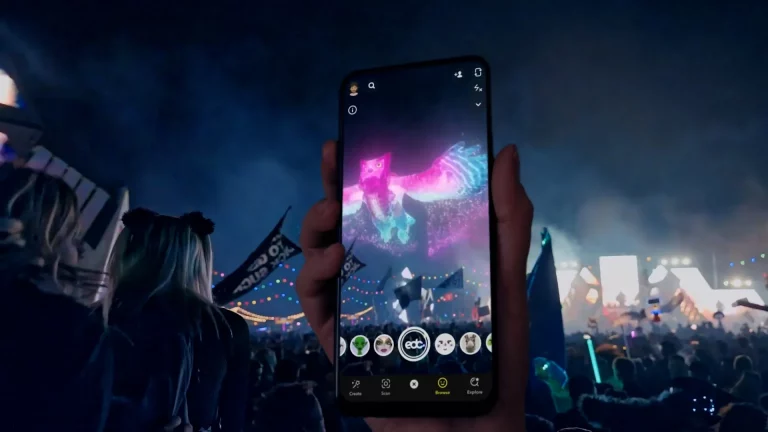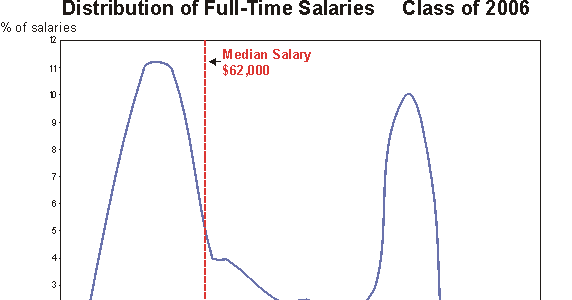
There’s good money in creating AR lenses. Top creators on Snapchat, for example, can make up to seven figures per year. Here are some publicly available (and self-reported) data points:
Cyrene Quiamco: $750,000
Katie Feeney: $1,000,000
Sarah Callahan: $1,000,000
Joey Rogoff: $1,200,000
Of course, these are the top earners and hence outliers. But can we make a reasonable guess of how much full-time professional lens creators make on average?
Probably not, but I will try anyways.
I’m working with data from Snap’s Spotlight program as a base and will make some reasonable assumptions and comparisons along the way. I’m writing this as I am doing the calculations and assumptions in real time. I don’t know what number will come out at the end, and I promise I will not go back and edit anything.
For this very reason, I can’t give you the final number in the intro. You will have to scroll down to see it.
Foundation: Snap’s Spotlight program
Snap is one of the major AR platforms, so it is a good context to do this ‘wagging’ (wild-ass-guessing) exercise.
Snap creators can work independently with brands, or they submit ‘community lenses’ directly to Snap. I would argue that creators who are able to find contract work for brands sit at the top of the food chain and make more money.
Below, I use data from the Spotlight program that compensates individual creators of community lenses. By anchoring my analysis on data from the probably less compensated group, I am taking a conservative approach.
Snap has paid more than $250 million in 2021 to 12,000 creators through its Spotlight program. On average, that would be around $20,800 per creator.
However, earnings are not evenly distributed. Otherwise, how would we explain the earnings of top creators mentioned above?
I thus would argue that the $20,800 number is absolutely meaningless.
Most likely, there is a small number of professional super-star creators who sit at the top and make tremendous amounts of money. And at the other end of the spectrum, there will be a large number of hobby creators who make very little money. In other words, I expect a bi-modal distribution (i.e., a distribution with two local maximums) and a rather large Gini coefficient.
It would look something like this:

The Gini-coefficient measures income inequality across all members of a particular group. A Gini coefficient of 0 signals perfect equality: Everybody makes the same money, which would be $20,800 in the current case. A Gini coefficient of 1 signals perfect inequality: In this case, one person would rake in $250 million, and 11,999 others would go home empty-handed. The true value for the Gini coefficient falls somewhere between 0 and 1. For example in the general population of the US (a country well-known for its income inequality), the Gini coefficient is around 0.478.
We have no clue what the actual distribution and Gini-coefficient are for AR creators. This is where we enter absolute guessing territory. But in order to separate the many amateurs and hobbyists, who submit maybe one or two lenses to Snap, from full-time professional lens creators who submit on a regular basis, we need to start somewhere.
Friends, I humbly suggest that this starting point should be actors.
Parsing out amateurs/hobbyists from professional
I would say that income inequality amongst actors is probably a good comparison point for income inequality amongst AR creators. Becoming an actor is a high-risk career choice. You might make it and earn millions of dollars, or you become a walking Hollywood cliché.
I’m not saying at all that most people who create AR lenses are a joke (and neither are under-employed actors). All I’m saying is that I expect many of the 12,000 lens creators to make very small money from Snap, probably because they ‘just dabble’ and don’t make lens creation their main career.
I am trying to guess how much the average professional lens creator might make; the person who creates lenses as their main job. Thus, I need to clean the data and exclude the money made by people at the very low end of the income scale.

The graph above (the orange bars) shows the bi-modal distribution of income amongst actors in 2019. Its Gini coefficient is a whopping 0.666, which is further proof that Hollywood is run by the devil himself. The average salary in 2019 was $45,921. I’m just using this as a comparison standard to work out some likely percentages within the lens creator distribution, and I want to work with easy numbers. So, let’s pretend that the average salary for actors was $50,000.
The graph shows that about 50% of actors made less than $20,000, which is 40% of the (rounded up) average. About 5% of people made between $100,000 to $110,000, roughly twice the average. Then there are very few people for a long stretch, and about 4.5% of people (let’s say 5% to keep things simple) made at least $200,000, about four times the average. It’s a bi-modal distribution.
One thing this graph does not show is how far ahead top performers are in terms of income. The 20 best-paid actors (10 male and 10 female, and yes there are unreasonably wide discrepancies that I am averaging out in my analysis) earned $45,145,000 on average (also 2019 data). That is about 1,000 times more than the average wage for all actors.
With this comparison standard in mind, I make the following assumptions for AR lens creators:
- 50% of the 12,000 AR creators are amateurs or hobbyists who made less than 40% of the average (i.e., at best $8,320 per year, which is not enough to live on). I thus exclude 6,000 hobbyist creators from the 12,000 overall creators, which leaves me with 6,000 professional creators paid via Snap’s Spotlight program.
- I deduct the share that was paid to 6,000 hobbyists from the $250 million overall: Following my actors comparison distribution, 3,000 creators made less than 20% of the average, and 3,000 creators made between 20% and 40% of the average. These are ranges, so I take the midpoints of 10% and 30%: 3,000 x 10% x $20,800 = $6.24 million, and 3,000 x 30% x $20,800 = $18.72 million. Together, hobbyists account for $24.96 million in payouts. Let’s round this up to $25 million of the overall $250 million payouts.
- I also have to account for the outliers at the other end of the spectrum, the super-high earners. That’s rather difficult because it’s an open range to the top (whereas the bottom range was closed by zero income). For actors, the gender-balanced top 20 earners made 1,000 times more than the national average of all actors. About 5% made at least four times the average and potentially much more. I only want to take out the extreme outliers at the top, because they would inflate the average value if I left them in. Let’s say that 60 of the 6,000 remaining creators (top 1%) make $1 million on average. Those are the top earners who self-report their income via tweets and who we read about (see numbers above). That means I deduct 60 x $1 million = $60 million from the $225 million remaining payouts, or 27% (24% if I include the pocket money given to hobbyists). Given that in the overall US labor force the top 1% of earners contribute 20% of American annual income, I think this is a reasonable guess. This means that the $250 million paid out by Snap overall might distribute as follows: $25 million to 6,000 hobbyists, $60 million to the top 1% of professionals (60 individuals), and $165 million to all remaining 5,940 professional AR lens creators.
We now have a better (because it’s adjusted for hobbyists and outliers) average number: A good guess for the average income for professional AR lens creators who participate in Snap’s Spotlight program is around $27,778 per year.
But what does this number mean for people who consider making AR lens creation their main gig?
Is this a career worth pursuing?
Most AR creators shouldn’t expect to quit their day job anytime soon.
While $27,778 might go a long way in some non-US countries, it is considerably less than the median national income of $44,225. The gap to full employment in a similar career is even larger: Graphic designers (medium seniority) make about $80,000 per year.
However, my analysis of the income distribution amongst actors has also shown how much variety might exist in the mid-range. Some meaningful percentage of professional creators, let’s say between 10% and 20%, could reasonably make two to five times the average, resulting in a decent yearly income of somewhere between $55,500 to $140,000 (decent depending on where you live, of course).
This seems to be a realistic range that can be achieved through hard work, lots of hustle, and a decent amount of talent. Why two to five times the average? Because in my comparison context about 5% of all actors made four times the average or more. I decided to be very conservative in terms of what ‘or more’ means (thus 5 instead of 7 or 10 times more). And why in between 10% and 20%? Because the share of all actors who made twice the average or more is about 11% (including the bottom half of earners). I excluded the bottom 50% of earners in my analysis for AR creators because I assumed that they are pursuing this as a hobby, not as a real career. Thus, you can immediately double the 11% to 22%. Again, I’ve been rather conservative here in my assumptions.
Thus, if you’re really serious, have some talent, and are willing to work hard, then becoming a full-time AR lens creator seems to be a reasonable career path. You can work your way into an income level that is on par with an industry career, and you have massive upside potential if you manage to break into the top-earner category.
For this career choice to pay off, however, you should definitely strive to be above average.
Two more things to keep in mind:
First, remember that I tried to be conservative. If you are able to work directly with companies to create branded lenses (rather than community lenses on Snap), I would expect even higher average earnings.
Second, the AR market is still emerging and will grow considerably over the next couple of years. Even though this will attract additional AR designers to enter the game, it should overall benefit more established creators who already honed their skills and started building their following and network.
For now, however, earnings that exceed $140,000 per annum probably require a fair bit of luck, on top of talent. To reach these income levels, you would need some big influencer to popularize your lens or get featured by the social media platform you’re designing for.
Let me say one more time that this was an exercise in wild-ass guessing. Actually no, I’d rather say it was an exercise in informed guessing because I looked for reasonable comparison data to guide my assumptions and calculations.
I would be very interested in talking to AR creators and hearing about your experience with the industry and, if you’re willing to share, your income levels.
 Dr. Joachim Scholz is a marketing professor with an academic focus on AR. See his original writings on Medium and contact him to discuss lens creator income here.
Dr. Joachim Scholz is a marketing professor with an academic focus on AR. See his original writings on Medium and contact him to discuss lens creator income here.






